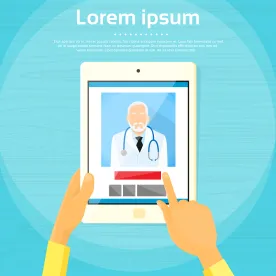The Medicare Access and CHIP Reauthorization Act (MACRA) is expected to drastically change how physicians are paid by the Centers for Medicare and Medicaid Services (CMS). Under the proposed rule, physicians will be given the choice between two payment models: alternative payment models (APMs) and the Merit-Based Incentive Payment System (MIPS). CMS predicts a majority of physicians will elect to follow MIPS when the new payment models go into effect in January 2019.
What does it mean if a physician chooses MIPS?
Physician performance will be based on six outcomes chosen by the provider. MIPS is expected to reduce financial penalties for physicians at the aggregate level and increase potential for bonus payments. Performance thresholds are determined by the median or mean scores of all physicians in a prior period and performance above this threshold will earn a bonus. Performing at the threshold will net no adjustment and below the threshold will incur a penalty. Those performing in the top 25% will receive an additional bonus. Because there will always be providers performing below the threshold, MIPS is often regarded as higher risk. Adjustments will range from 4-9%.
What does it mean if a physician chooses an APM?
An APM includes:
-
A Medicare Shared Savings Program;
-
A demonstration under the Health Care Quality Demonstration Program; or
-
A demonstration required by federal law.
Examples of such models include: Track 2 and 3 ACOs, Next Generation ACOs, Comprehensive Primary Care Plus (CPC+), most Comprehensive ESRD Care organizations (ESCOs), and Oncology Care Model Track 2.
Physicians participating in a qualified APM will use quality measures comparable to those under MIPS, use a certified EHR, and assume more than a nominal financial risk (currently undefined). Qualifying participants will receive 5% lump-sum bonuses on Medicare payments from 2019 through 2024. With the guaranteed bonus, participation in an APM may turn out to be more stable than other options.
Although definitions of APMs are predetermined, the APMs provide more flexibility for investments such as hiring care coordinators.
Considerations
Modern Healthcare reports physicians are wary of how APMs will be defined, especially since few of CMS’ existing alternative payment models will qualify as APMs under the proposed rule. According to the American Medical Association, Medicare APMs will be reviewed and recommended by a MACRA-created Physician-Focused Payment Models Technical Advisory Committee.
Harold Miller, president and CEO of the Center for Healthcare Quality and Payment Reform, sees a bias towards larger organizations in the proposed rule. Under APMs, physicians assume risk for the entire CMS payment around an episode of patient care. Because spending could potentially be higher than payment, physicians may be incentivized to join larger hospital groups to mitigate the financial risk. The American Academy of Family Physicians reports MACRA is helping small practices by allocating $20 million a year to provide technical assistance through Quality Improvement Organizations and Regional Extension Centers to small practices (less than 15 professionals) participating in either payment model.
How to Prepare
The American Academy of Family Physicians recommends reporting data on quality measures through the Physician Quality Reporting System (PQRS) as soon as possible as performance in 2017 or 2018 may set the threshold for implementation in 2019. If a practice is already submitting data, utilize the Quality and Resource Use Report to identify areas for improvement in the coming years.
The American Medical Association recommends providers make sure the EHR in use is certified, as it will be crucial for APMs participation and MIPS reporting.



 />i
/>i

